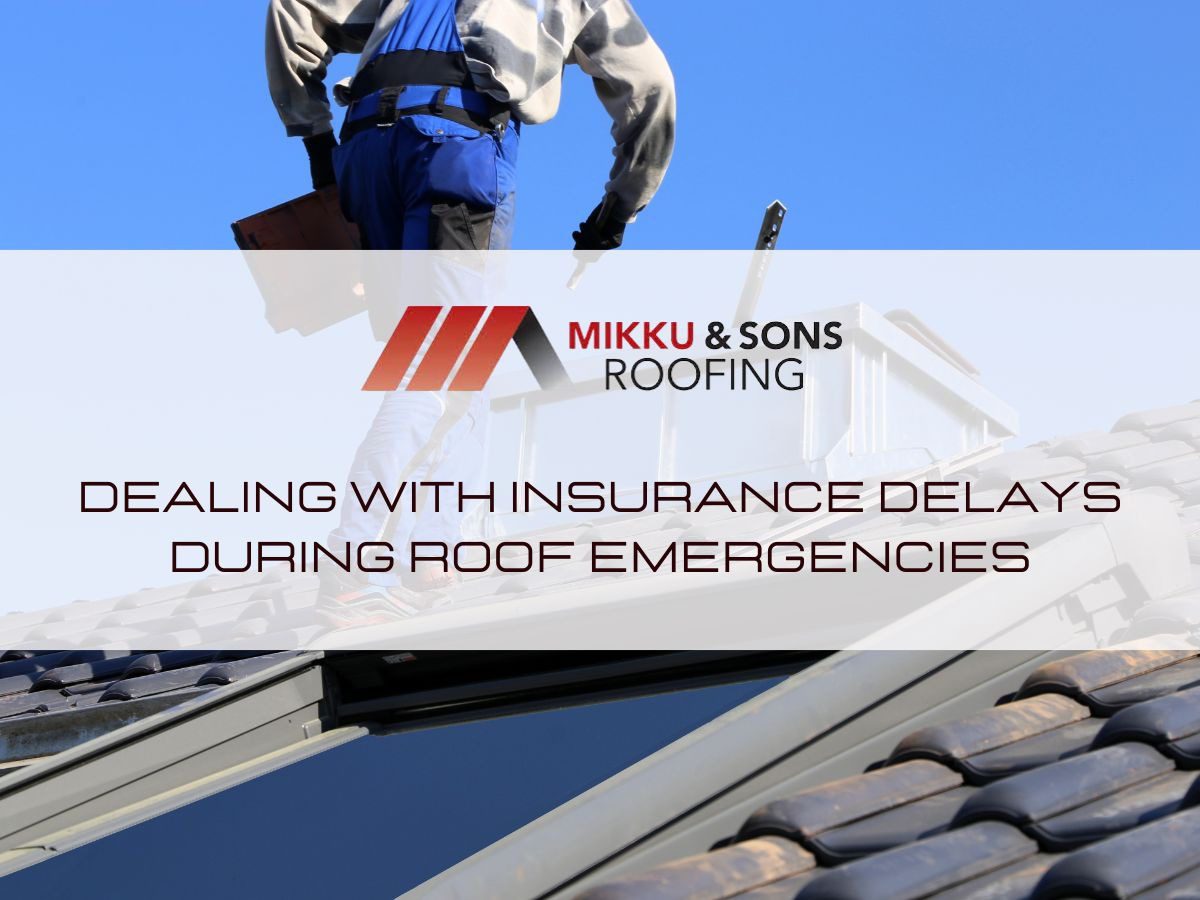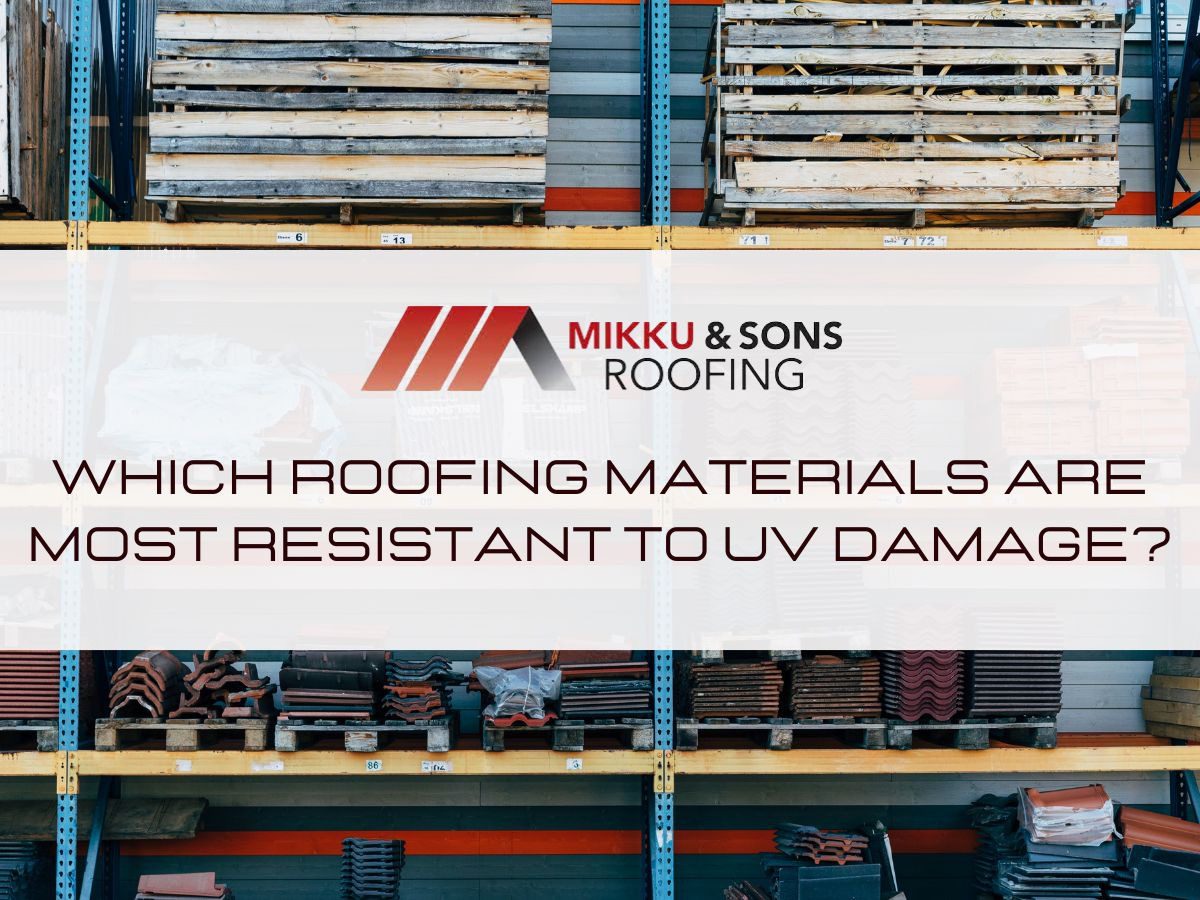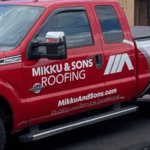

Sun exposure may seem harmless, but for your roof, it can be one of the biggest causes of early aging. In high-sun regions like Arizona, ultraviolet (UV) radiation breaks down roofing materials, fades color, and weakens structural layers over time. Understanding what roof materials are UV resistant helps you invest wisely, reduce repair costs, and extend your home’s protection for decades.
Let’s explore how UV damage occurs, which roofing materials are most resistant to UV damage, and what you can do to keep your roof in peak condition under the desert sun.
Roofing materials face constant stress from sunlight, heat, and weather. UV radiation is a form of energy that gradually breaks down chemical bonds in roofing materials, especially when combined with high temperatures. Over time, this exposure can cause cracks, fading, warping, or even leaks.
In places like Phoenix, roof surfaces can reach over 150°F in summer. That heat accelerates oxidation, making asphalt and synthetic materials brittle. Wooden shingles may dry out or split, and even metal roofs can lose protective coatings if not properly finished. UV rays act like a slow but relentless force that dries, bleaches, and weakens roofing materials year after year.
Most roofs begin showing early UV damage as discoloration, chalking, or slight curling at the edges. As it worsens, the surface granules that reflect sunlight wear off, exposing the lower layers. Once that barrier is lost, the roof becomes more vulnerable to water and heat penetration.
Homeowners in hot, dry climates should think of UV protection as a top priority not just an extra feature. The right material and coating can double your roof’s life expectancy.
Some roofs handle sunlight better than others. Materials like metal, clay tile, slate, and single-ply membranes are designed to withstand prolonged sun exposure without losing integrity. Below is a quick comparison of how these roofing materials perform under UV stress.

| Material | UV Resistance | Average Lifespan | Maintenance Level | Approx. Cost per sq. ft. (Installed) |
| Metal Roofing | Excellent | 40–70 years | Low | $6–$14 |
| Clay/Concrete Tile | Excellent | 50–100 years | Moderate | $10–$20 |
| Slate | Outstanding | 75–150 years | Low | $15–$30 |
| Modified Bitumen / TPO | Very Good | 20–30 years | Low to moderate | $5–$8 |
| Cool Roof Coatings (Elastomeric) | High (reflective) | Re-coat every 10–15 years | Moderate | $3–$6 |
Each material reacts differently to UV exposure, so let’s look at what sets them apart.
Metal roofs are among the most UV-resistant options available today. Materials such as aluminum, steel, or copper naturally reflect a high percentage of sunlight. Modern metal panels come with specialized reflective coatings like Kynar 500 or cool roof pigments that prevent heat absorption and protect against oxidation.
Because metal doesn’t warp or dry out, it maintains structural strength even after years of direct exposure. Homeowners also appreciate that metal roofs are lightweight, recyclable, and energy efficient. A well-coated metal roof can last 50 years or more with minimal maintenance.
However, uncoated or cheaply painted metal can fade or corrode over time. Always verify that your chosen product has a UV-reflective finish and proper ventilation to prevent heat buildup.
Clay and concrete tiles are classic choices in desert climates for good reason. Their dense composition and natural color variations resist both heat and sunlight exceptionally well. The curved shape of tiles also allows airflow underneath, reducing surface temperature.
Clay tile roofs can easily last 75 years or longer if installed properly. Concrete tiles offer similar performance at a slightly lower cost, though they can absorb more moisture if not sealed. Both options resist fading, cracking, and deterioration from UV rays far better than asphalt shingles.
In hot, dry environments, clay or concrete tile remains one of the most enduring and UV-resistant roofing solutions available.
Regular inspections are recommended to check for cracked tiles or loose underlayment, which can wear faster than the tiles themselves.
Slate is a natural stone, which makes it nearly immune to UV degradation. Unlike synthetic materials, it doesn’t fade, dry out, or soften under sunlight. A slate roof can outlast the structure beneath it, with lifespans ranging from 75 to more than 150 years.
Its dark tone can absorb heat, but UV rays have virtually no effect on its composition. Slate is ideal for homeowners who want a long-term, low-maintenance solution that handles all weather extremes. The only downside is weight and cost installation requires a reinforced structure and skilled labor.
When it comes to natural UV resilience, few materials match the durability and timeless look of slate.
Flat or low-slope roofs often use materials like modified bitumen or thermoplastic polyolefin (TPO). These synthetic membranes are engineered for sun exposure and thermal flexibility. TPO, in particular, reflects sunlight effectively thanks to its white or light-colored surface, reducing cooling costs in hot climates.
Modified bitumen roofs include UV-stabilized asphalt layers reinforced with fiberglass or polyester. With reflective coatings or granules, they hold up well under strong sunlight and offer affordable protection for commercial and residential flat roofs alike.
For maximum performance, membranes should be installed by certified professionals and periodically recoated to maintain reflectivity.
Roof coatings add another layer of defense against UV radiation. Elastomeric and acrylic coatings are common for both pitched and flat roofs. They act like sunscreen for your home creating a flexible, reflective barrier that shields the material beneath from sunlight, heat, and moisture.
A good coating can reflect up to 80% of UV rays, keeping roof temperatures significantly lower. Some coatings even expand and contract with temperature changes to prevent cracking.
Applying reflective or “cool roof” coatings extends roof life, reduces energy bills, and enhances UV protection across all materials.
Recoating every 10 to 15 years maintains peak reflectivity and ensures long-term performance.
Durability doesn’t just depend on material it also depends on upkeep. Even the most UV-resistant roofs benefit from regular inspections and minor maintenance to preserve their finish and prevent small issues from becoming major repairs.
Metal, clay, and slate roofs typically last several decades with minimal care. Synthetic options like TPO and modified bitumen need periodic cleaning and recoating to stay reflective. Here’s how longevity compares:
| Material | Average UV Protection Duration Before Maintenance | Recommended Inspection Frequency |
| Metal | 20–25 years before repaint or reseal | Once per year |
| Clay/Concrete Tile | 15–20 years (underlayment replacement) | Once per year |
| Slate | 30+ years | Every 2 years |
| TPO/Modified Bitumen | 10–15 years (recoat cycle) | Twice per year |
Proper care ensures each roof reaches or exceeds its projected lifespan. You can extend roof longevity with a few simple actions.
Small, consistent maintenance steps go further than costly replacements in preserving your roof’s UV protection.
UV exposure levels vary across the United States, and so should your roofing choice. Climate, humidity, and seasonal extremes all affect how materials perform over time. A roof that thrives in Phoenix’s dry heat may not suit a coastal or snowy environment.
In desert regions like Arizona, Nevada, and parts of Texas, heat-reflective and thermally stable materials metal, clay tile, or TPO are best. These roofs shed heat quickly and resist UV cracking. Homeowners in cooler northern states, like Wisconsin or Minnesota, benefit from heavier materials such as slate or architectural shingles with UV-reflective granules.
If you live in a city like Phoenix or Tucson, combining UV-resistant materials with proper attic insulation can lower indoor temperatures by 10–15°F during summer. That translates into measurable savings on air-conditioning costs.
The best UV-resistant roof for your home isn’t just about strength, it's about climate fit, design, and smart installation.
Working with a licensed contractor familiar with your region’s weather helps ensure every layer, from underlayment to finish, performs as intended.
Beyond durability, UV-resistant materials also support energy conservation. Reflective roofs reduce the amount of heat entering your home, which means your air conditioner works less. This is particularly valuable in states with extended sunshine hours.
According to the U.S. Department of Energy (2023), cool roofs can lower surface temperature by up to 50°F compared to conventional dark roofs. Over time, that difference reduces cooling energy use by 10–15% annually.
Clay tiles and metal panels are also recyclable, making them environmentally responsible choices. Elastomeric coatings, meanwhile, minimize material waste by allowing older roofs to be renewed rather than replaced.
A UV-resistant roof protects both your home and the planet by lowering energy demand and reducing material waste.
If sustainability is a priority, look for ENERGY STAR-rated materials that meet tested reflectance and emissivity standards.
Choosing a UV-resistant roof is an investment, not just a purchase. While upfront costs can vary widely, the payoff in longevity and reduced maintenance often outweighs the difference. For example, metal roofs cost about twice as much as asphalt shingles but can last three times longer with minimal upkeep.
Here’s a quick look at cost versus value for popular options:
| Material | Average Installation Cost (per sq. ft.) | Expected Lifespan | Cost Efficiency Over Time |
| Metal | $6–$14 | 40–70 years | High |
| Clay/Concrete Tile | $10–$20 | 50–100 years | Very High |
| Slate | $15–$30 | 75–150 years | Excellent |
| TPO / Modified Bitumen | $5–$8 | 20–30 years | Moderate |
| Asphalt Shingles (UV-treated) | $4–$6 | 15–25 years | Moderate to Low |
If you plan to stay in your home for decades, premium UV-resistant materials offer clear financial advantages. On the other hand, if you anticipate relocating within 10 to 15 years, an affordable coated system like TPO may deliver the best return.
Evaluating both upfront and long-term costs helps you choose a roof that meets your budget and performance expectations.
Even the best materials can fail if not installed correctly. UV protection depends on the proper combination of material, coating, underlayment, and ventilation.
A few professional steps make a major difference:
Quality installation should also include documentation of the coating type, thickness, and date applied for future maintenance scheduling. That level of detail helps preserve warranties and ensures the roof performs as promised.
Proper installation is the final and most important layer of defense against UV damage.
Phoenix homeowners face some of the harshest UV conditions in the country, making material quality and local expertise essential. Many trusted suppliers in the area specialize in heat-resistant and reflective roofing systems such as metal, tile, and TPO. Local stores often partner with certified installers to ensure full manufacturer warranties and compliance with Arizona building codes.
When exploring where to buy, consider outlets that offer complete packages, materials, coatings, and accessories rather than just shingles. These stores usually stock region-specific products that balance energy efficiency and long-term durability. Shopping locally not only guarantees access to UV-ready materials but also ensures your roof meets Phoenix’s demanding climate standards.
If you’re planning your next project, researching these Phoenix-area suppliers will help you compare costs, brands, and expert installation options that maximize your home’s protection from the sun.
